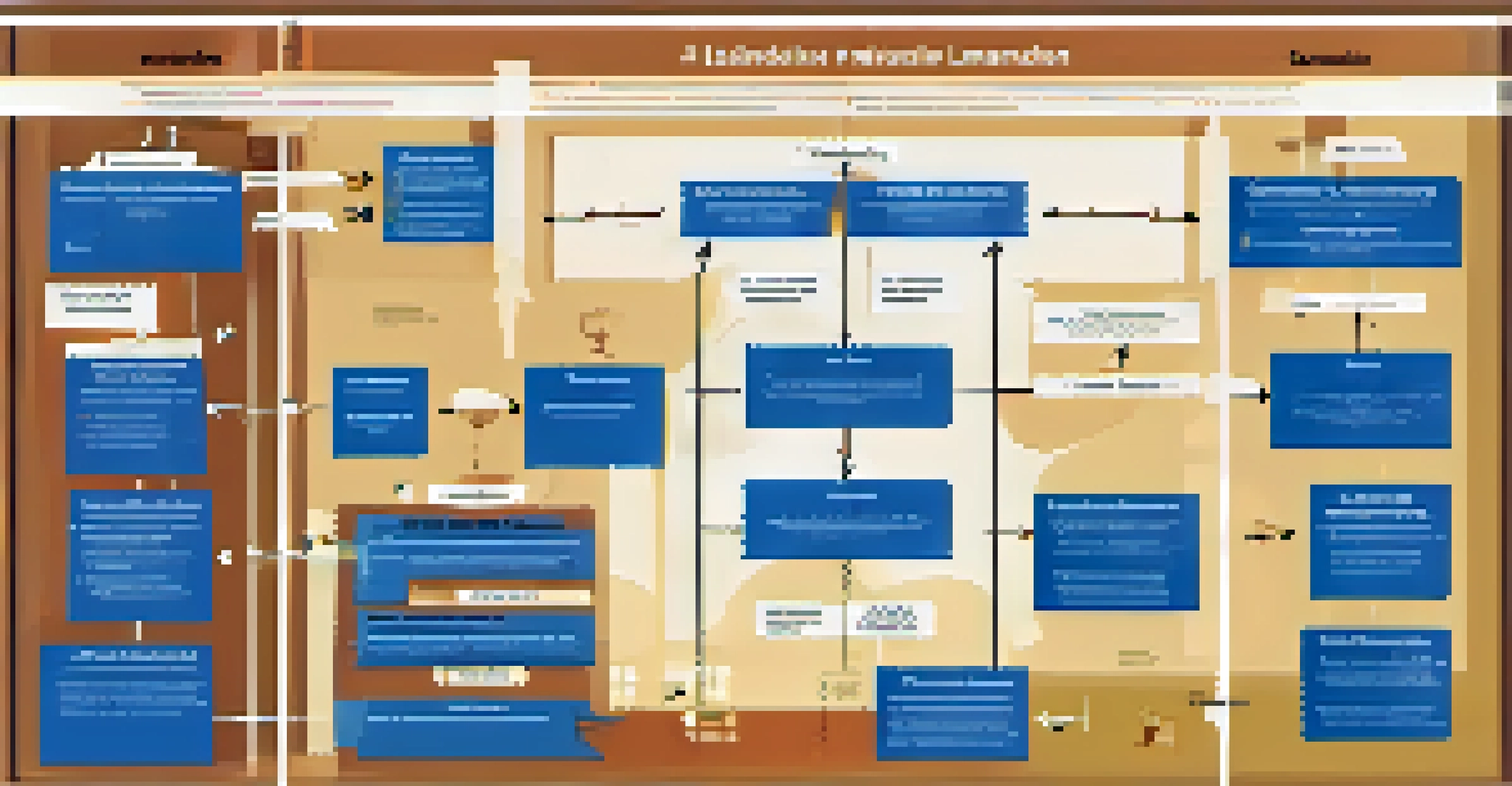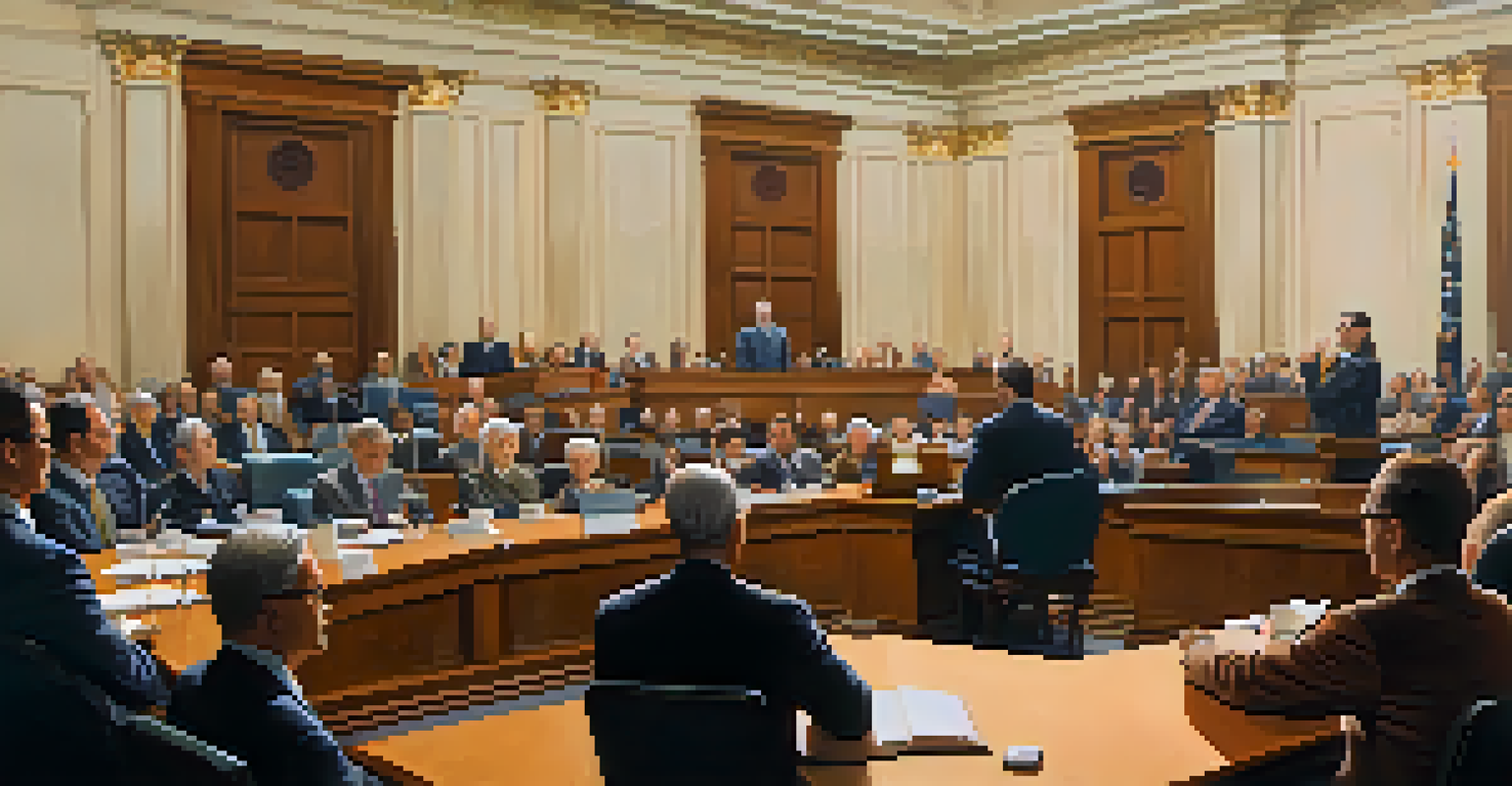New Jersey's Legislative Process: How Laws Are Made

Introduction to New Jersey's Legislative Process
New Jersey's legislative process is a fascinating journey that transforms ideas into laws. It involves several key steps and various participants, including the Governor, the Legislature, and the public. Understanding this process not only demystifies how laws are created but also empowers citizens to engage actively in governance.
The law is reason, free from passion.
At first glance, the process may seem complex, but it follows a structured path that ensures thorough evaluation and debate. Each step offers opportunities for public input, reflecting the democratic values of transparency and participation. By understanding these steps, New Jersey residents can better navigate their state’s political landscape.
This article will break down the legislative process into eight digestible sections, making it easier to grasp how a bill evolves from a mere idea into a law that affects daily life in New Jersey.
Step 1: Idea Generation and Proposal
The legislative journey begins with the generation of ideas, which can originate from various sources such as lawmakers, constituents, or interest groups. These ideas often address pressing issues or needs within the community. Once an idea is deemed significant, it is formalized into a bill, which is a proposed law.

Lawmakers play a crucial role in this stage, as they often sponsor the bill and champion its cause. The proposal must be carefully crafted to ensure it is clear and actionable. This stage is vital, as it sets the foundation for everything that follows in the legislative process.
Legislative Process Overview
New Jersey's legislative process transforms ideas into laws through structured steps involving public participation.
For instance, if a local community identifies a need for improved public transportation, a legislator can turn this concern into a bill aimed at expanding transit options, ensuring that the voices of the people are heard.
Step 2: Bill Introduction
Once a bill is drafted, it must be officially introduced in either the New Jersey Assembly or Senate. This introduction marks the bill’s entry into the legislative arena, where it will begin to gain momentum. The sponsor of the bill will present it during a session, offering a brief overview of its purpose and significance.
Democracy is not a spectator sport.
Following the introduction, the bill is assigned to a committee for further scrutiny. Committees are vital as they consist of lawmakers who specialize in specific areas, allowing for informed discussions and recommendations. This stage ensures that the bill is evaluated thoroughly before it progresses.
For example, a bill related to education will likely go to the Education Committee, where experts can discuss its implications and suggest amendments based on their knowledge and experiences.
Step 3: Committee Review and Hearings
During the committee review, members will analyze the bill, gather information, and may hold public hearings to solicit feedback from citizens and stakeholders. These hearings are crucial as they provide a platform for various perspectives to be shared, highlighting potential impacts or concerns regarding the legislation.
After discussions and testimonies, the committee will vote on whether to recommend the bill for further consideration. If the bill passes, it moves forward; if not, it may be tabled or amended. This process ensures that only well-considered bills advance to the next stages.
Importance of Committee Reviews
Committees play a crucial role in evaluating bills, allowing for expert discussions and public input before further consideration.
For instance, if the committee hears strong opposition to a proposed tax increase, they might suggest revisions or even decide to halt the bill's progress altogether, reflecting the committee's responsibility to represent the public interest.
Step 4: Floor Debate and Voting
If a bill successfully navigates the committee, it is scheduled for a floor debate where all members of the respective chamber can discuss its merits. This is a critical moment, as lawmakers present arguments for and against the bill, allowing for a robust exchange of ideas. The debate often highlights the bill's potential benefits and drawbacks.
After the debate concludes, a vote is conducted. A simple majority is required for the bill to pass; if it does, it moves to the other chamber (Assembly or Senate) for a similar process. This form of checks and balances ensures that legislation is thoroughly vetted from multiple angles.
For example, a bill on environmental regulations may spark passionate debates about economic impacts versus ecological responsibility, showcasing the diverse priorities of New Jersey’s lawmakers.
Step 5: Second Chamber Consideration
Once a bill passes one chamber, it is sent to the other chamber for consideration. This step is crucial as it allows a different group of lawmakers to review the legislation. The second chamber may hold its own committee hearings and floor debates, similar to the first chamber's process.
If the second chamber makes amendments, the bill returns to the original chamber for approval of those changes. This back-and-forth process can sometimes result in significant revisions, ensuring that the final legislation is a compromise that meets the needs of both chambers.
Citizen Engagement Matters
Understanding how laws are made empowers citizens to advocate for issues that matter to them and actively participate in governance.
Imagine a bill that initially proposed a specific funding amount for a public health initiative; upon review, the second chamber might adjust it based on budget considerations, reflecting the collaborative nature of the legislative process.
Step 6: Governor's Review
After both chambers have approved the bill, it is sent to the Governor for review. The Governor has several options: sign the bill into law, veto it, or take no action, in which case the bill automatically becomes law after a set period. This stage is critical as it represents the final approval of the legislative process.
If the Governor vetoes the bill, it can be sent back to the legislature, where lawmakers may attempt to override the veto with a supermajority vote. This adds another layer of scrutiny, ensuring that the Governor’s concerns are addressed.

For instance, if the Governor believes a bill on education reform does not adequately address funding disparities, they might veto it, prompting legislators to reconsider and make adjustments before reintroducing it.
Step 7: Becoming Law
Once signed by the Governor, the bill officially becomes law and is assigned a chapter number. This is the moment when the hard work of lawmakers, committees, and public input culminates in tangible change. The new law will then be published and made available to the public, ensuring transparency.
It is important to note that laws often come with an effective date, which may be immediate or set for a future date, allowing for a smooth transition. This means that while the law is now in effect, there may still be preparations needed for its implementation.
For example, a law mandating new safety regulations for construction sites might have a delayed effective date to give businesses time to comply with the new requirements.
Conclusion: Engaging in the Legislative Process
Understanding New Jersey's legislative process empowers citizens to engage more meaningfully in governance. By knowing how laws are made, individuals can advocate for issues that matter to them and participate in public discussions. Whether it’s attending committee hearings or reaching out to their representatives, every voice counts.
Moreover, the legislative process is a reminder of the importance of collaboration and compromise. Each step reflects the diverse opinions and needs of New Jersey's residents, emphasizing that democracy thrives on participation.
So, next time you hear about a proposed bill, remember that it is the result of a complex journey, one that you can influence and be a part of, ensuring that your concerns and ideas are represented in the lawmaking process.